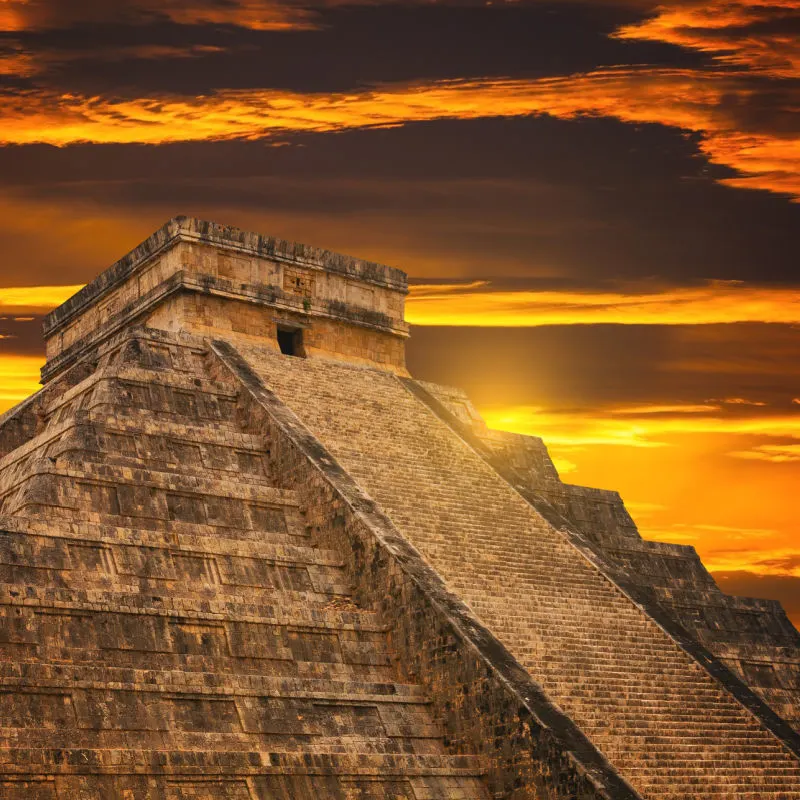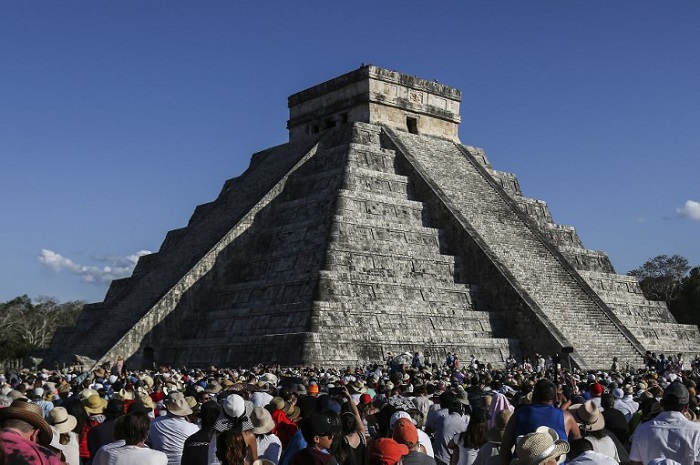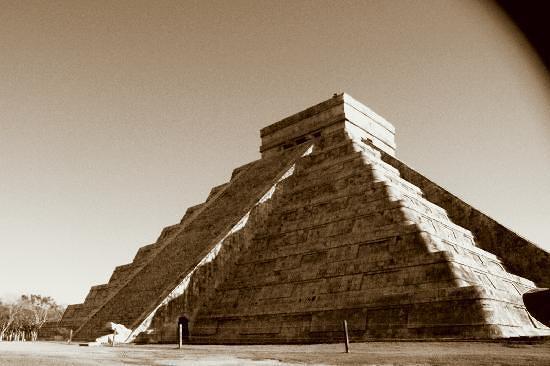It’s no doubt that Chichen Itza is up there as one of the most awe-inspiring and fascinating archeological sites not only in Mexico; but in the world.

It is renowned for being one of the infamous new seven wonders of the world – once an important hub of Mayan civilization and now an incredible archaeological site that draws in thousands of excited national and international visitors every year.
It is naturally an all-year-round attraction, but at the UNESCO world heritage site of Chichen Itza – during the spring equinox, it becomes a very significant time of year to visit, where the ancient city experiences a unique natural phenomenon.
Spring Equinox
The spring equinox welcomes the beginning of springtime for everyone in the Northern Hemisphere; it’s a time of rebirth and renewal for many, and in Mayan culture, it’s even more prominent as it marks the start of their planting season, and historically at Chichen Itza, they celebrate this extraordinary phenomenon called ‘The Snake Of Light.’ This usually occurs annually around March 21.
The Pyramid of Kukulcan is a temple building with a rectangular temple on the top of the structure. No travel guide to the Yucatán Peninsula would be complete without visiting Chichen Itza and its Pyramid of Kukulcan. Unfortunately, the ancient pyramid temple complex of the Aztecs was destroyed by the Spanish, but visitors can still see its ruins in Mexico City today. Still, the Kukulcan Pyramid stands tall and mighty, and it’s one of the top attractions in Mexico among history lovers.

Ancient Mayan city of Chichen Itza, Mexico
Mexico’s Pyramid Of Kukucan: Perhaps The Most Famous Of The Maya Pyramids
Chichen Itza was built during the Terminal Classic period and was a major focal point of the Maya civilization for a time. It was once one of the largest of the Maya cities and may have been one of the mythical great cities of later Mesoamerican tales.
It is one of the most popular tourist destinations in Mexico, attracting over 2.6 million visitors in 2017 (so expect to see crowds of gawking tourists while there). The Pyramid of Kukulcan is also one of the tallest and best-preserved examples of ancient Mayan architecture and engineering.
Like so many other pyramids found throughout Mesoamerica, the Pyramid of Kukulcan is built on an older and smaller structure. The old temple was located within it, which was around 16 meters high. The platform of the Pyramid of Kukucan is built on a platform measuring 182 feet wide.
- Pyramid of Kukulcan Height: 78 feet or 24 meters (plus 20 feet or 6 meters for the temple top)
- Base: 181 feet or 55.3 Meters
It is thought to have been built between the 8th and the 12th centuries AD. The substructure may have been built between 600 and 800 AD, and the last phase of construction is between 900 and 1000 AD. It was dedicated to the god Kukulcan – a Feathered Serpent deity (closely related to the Aztecs’ god Quetzalcoatl).
Pyramid of Kukulcan Admission (To The Archeological Site)
- Adults (13+): $613 MXN ($34 USD)
- Children: $90 MXN ($5 USD)
- Opening Hours: 8:00 am to 5:00 pm
The site is open every day of the week from 8:00 am to 5:00 pm.
TYT Newsroom


